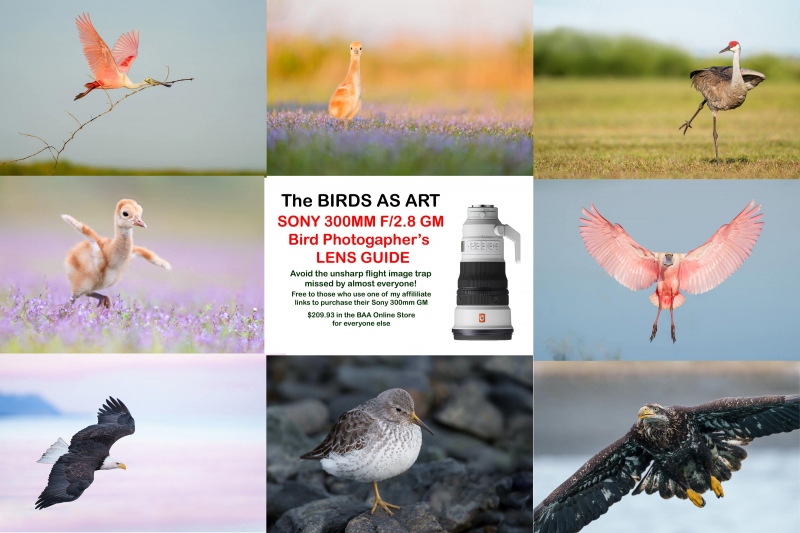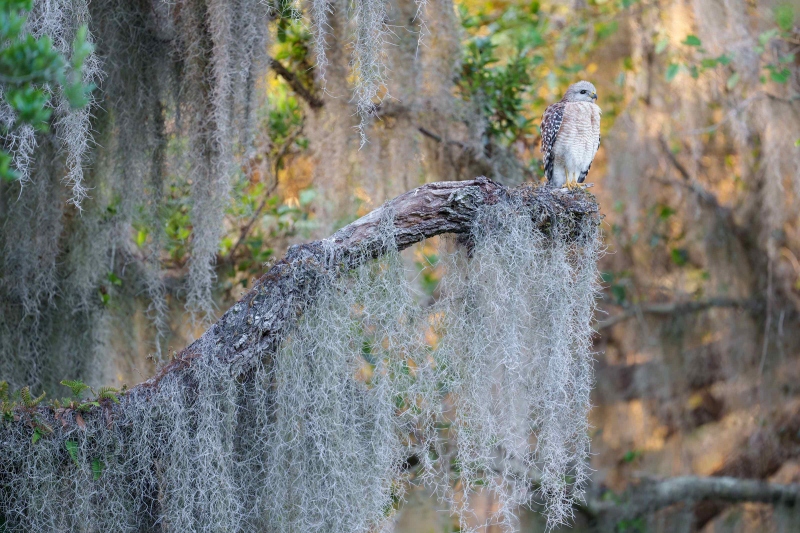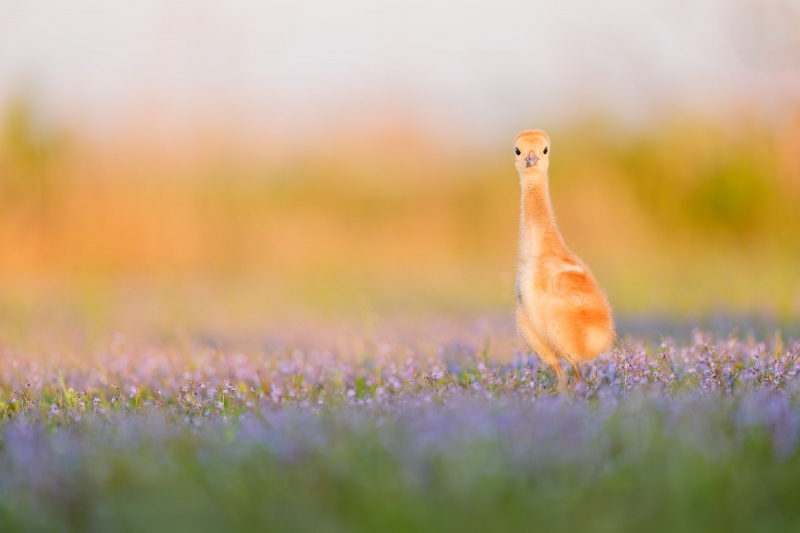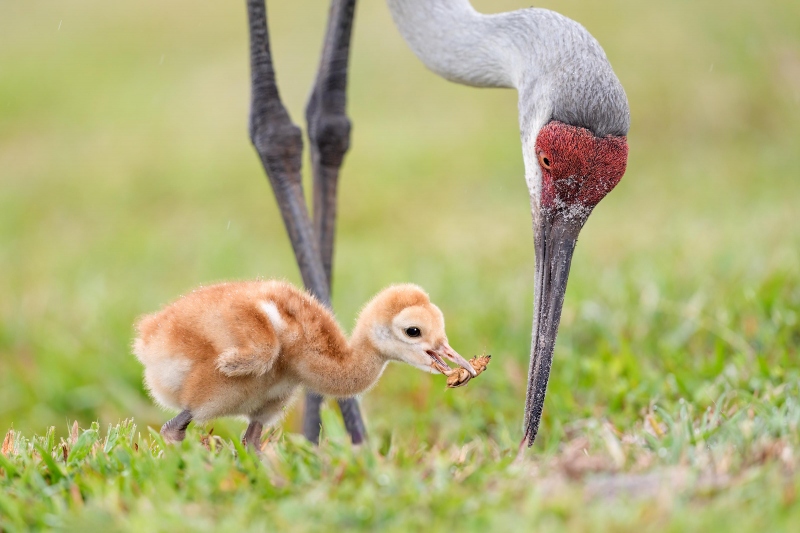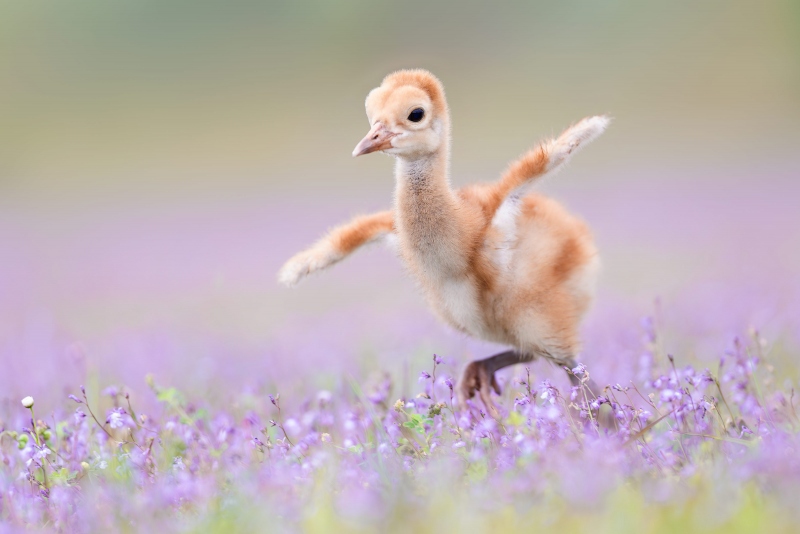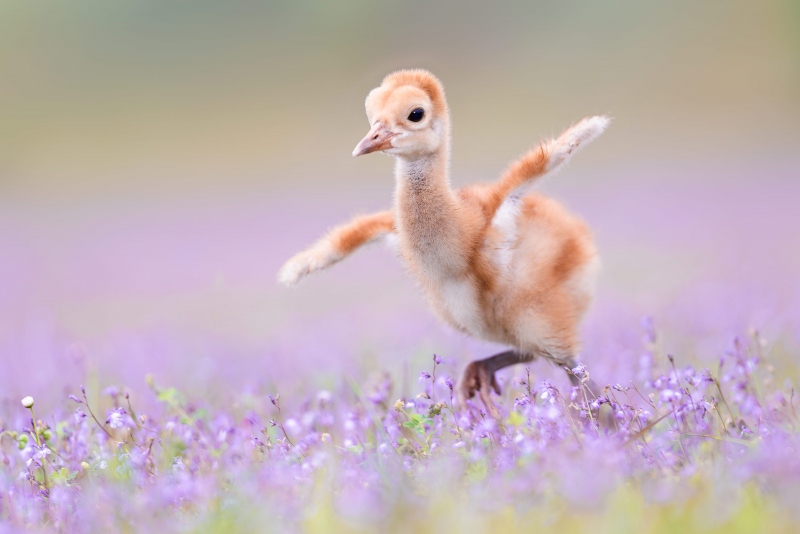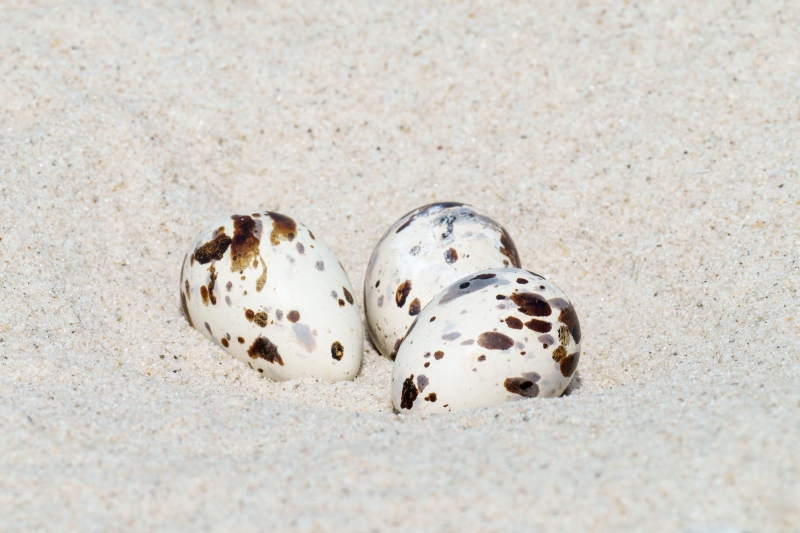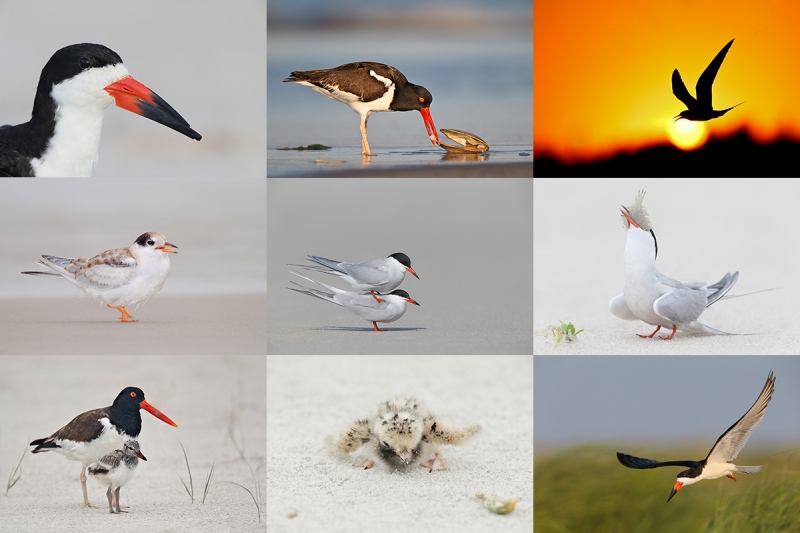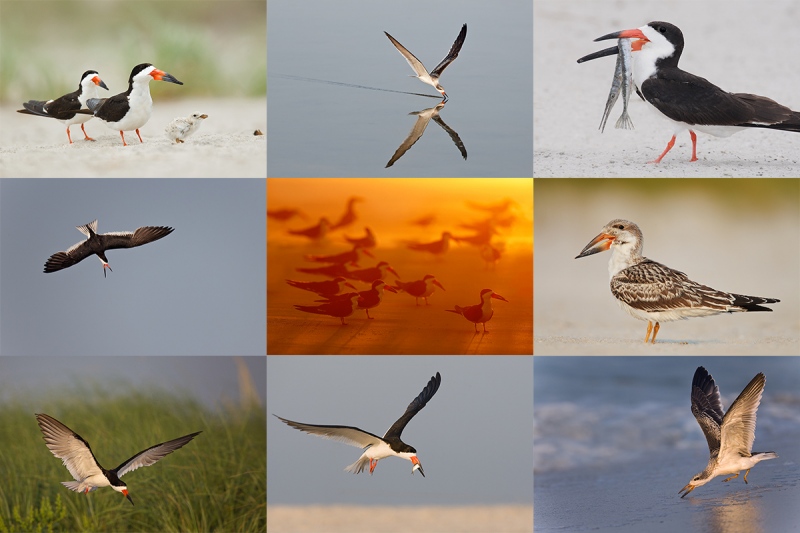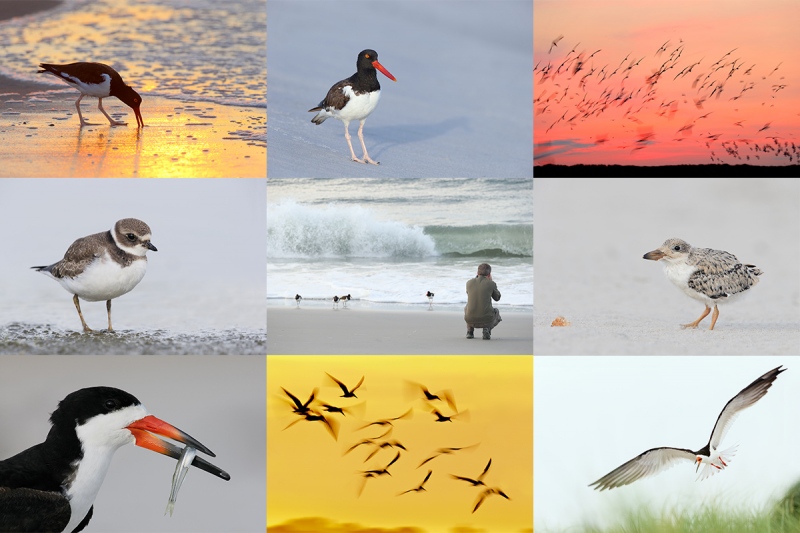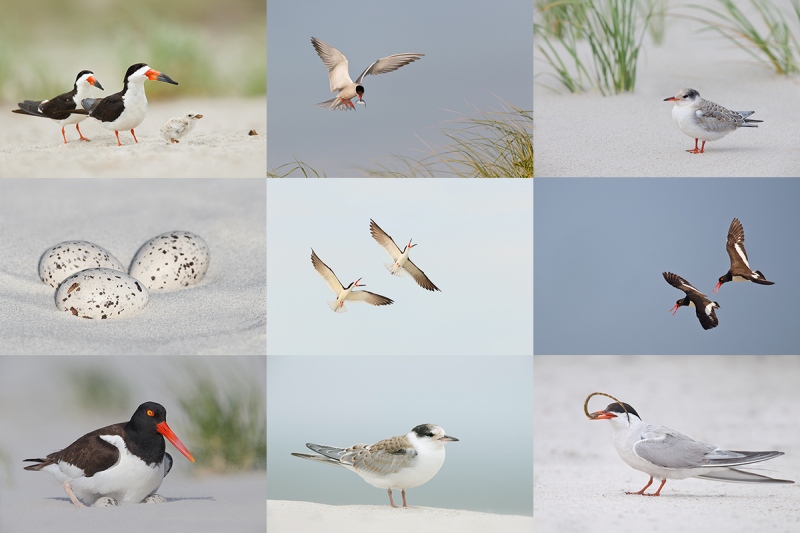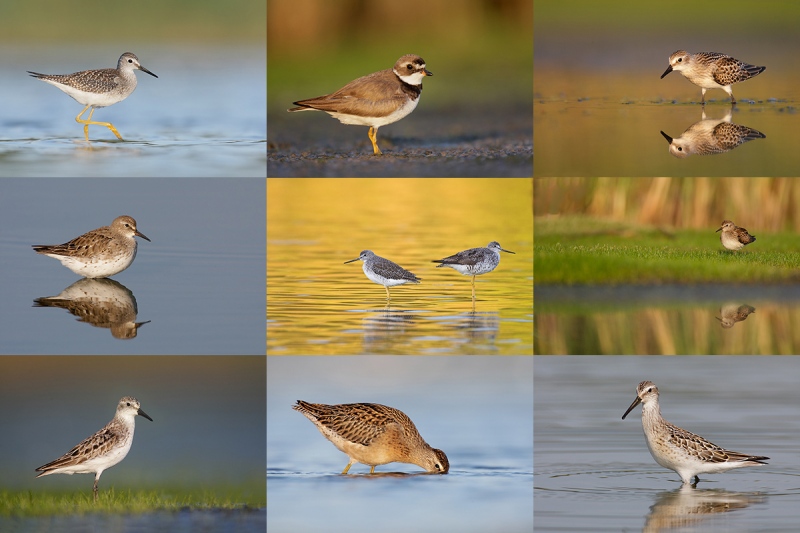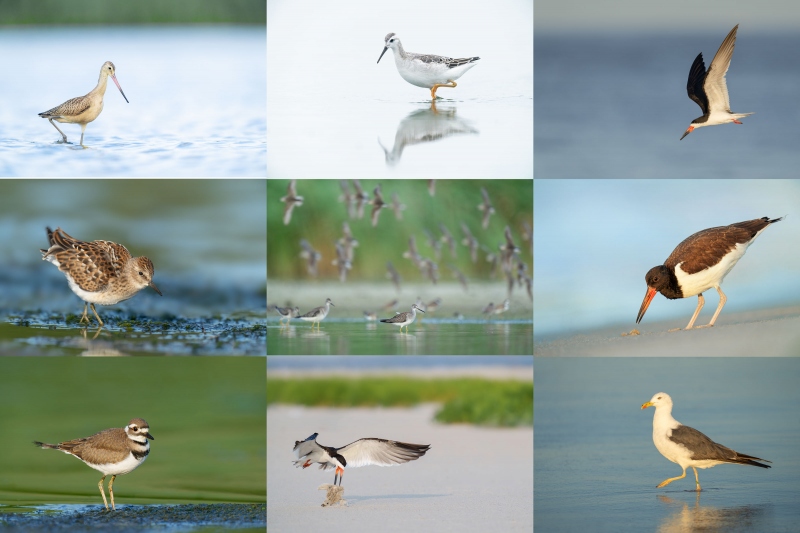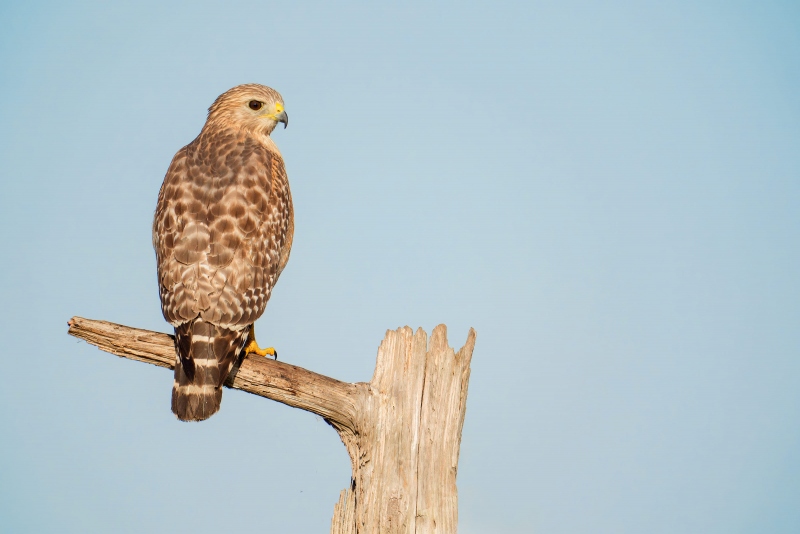April 4th, 2024 Your Call?
Which of the images featured in this blog post is your favorite?
What’s Up?
Congrats to the beyond amazing Caitlin Clark of Iowa and to Paige Bueckers of UConn for leading their teams to the Women’s Final Four in the Ladies “March Madness” NCAA college basketball tournament.
When I went down to the lake on Wednesday morning, the parents of the first pair of Sandhill Crane chicks that hatched at ILE about two weeks ago were foraging alone. Thus, I am 99.99% sure that the both of chicks perished some time on in the last two days. The two chicks that hatched more recently were doing fine yesterday.
Today is 4 April 2024. I will be heading down to the lake early today for a short visit. I have lots to do today and look forward to getting stuff done. Whatever you are doing I hope that you too opt to have a great day.
Don’t look now but this blog post makes five days in a row with a new educational post just for you.
If you plan on purchasing a Sony a9 III Mirrorless Camera (or anything else for that matter), please remember to use or write for either my Bedfords discount code or my B&H affiliate link. Folks who use one of my two affiliate links to purchase the a9 III will receive my .DAT settings (the complete camera set-up) along with a Buttons and Dials Guide.
Please remember to use the B&H links that are found on most blog pages and to use the BIRDSASART discount code at checkout when purchasing your new gear from Bedfords to get 3% back on your credit card and enjoy free second-day air FedEx. Please, also, consider joining a BAA IPT. You will be amazed at how much you will learn!
If an item — a Delkin flash card, or a tripod head — for example, that is available from B&H and/or Bedfords, is also available in the BAA Online Store, it would be great, and greatly appreciated, if you would opt to purchase from us. We will match any price. Please remember also to use my B&H affiliate links or to earn 3% cash back at Bedfords by using the BIRDSASART discount code at checkout for your major gear purchases. Doing either often earns you free guides and/or discounts. And always earns my great appreciation.
|
|
|
For those who did not use my link to purchase their Sony 300mm f/2.8 GM lens, this item should be in the store this afternoon (for real this time). Click on the image to enlarge and to be able to read the fine print.
|
The BAA Sony 300mm f/2.8 Lens Guide
Impressed by my Sony FE 300mm f/2.8 GM OSS Lens (Sony E) images from the last three posts? Use either my Bedfords or B&H affiliate link to purchase your Sony 300mm f/2.8 GM lens and shoot me your receipt via e-mail and request a copy of the first-ever BAA Lens Guide. This short guide will be published this afternoon. I thought that it would take only minutes to create this guide, but I was dead wrong. In the process of creating it, I learned a ton about the lens. And even better, I discovered a simple yet potentially fatal flaw that was resulting in sporadically unsharp flight images. The set-up fix is simple. Just be sure to use one of my affiliate links and get the guide for free.
More Moss!
In the Same Bird. Same Lens. Two Slightly Different Images blog post here, the small in the frame version (Image #1, above) was best by far according to me and all those who commented. Yes, one of the reasons I placed the bird on the right side looking out of the frame was to use the branch as a leading line, but more importantly for me, was to include more of the hanging moss in the frame; there was none to my right.
Image #2 was sharp and well-composed, and the rear view was nice, but this one was nothing really special.
|
|
|
This image was created on 30 March 2024 down by the lake near my home in Indian Lake Estates, FL. Seated on damp grass, I used the toepod technique with the handheld Sony FE 300mm f/2.8 GM OSS Lens (Sony E) and the ridiculously amazing Sony a9 III Mirrorless Camera. The exposure was determined via Zebra technology with ISO on the Thumb Dial. ISO 1000: 1/1000 sec. at f/2.8 (wide open) in Manual mode. When evaluated in RawDigger, the raw file brightness was determined to be dead solid perfect. AWB at 7:33:24am on a clear sunny morning about 15 minutes after sunrise.
Tracking Zone/AF-C with Bird Face/Eye detection enabled performed to perfection. Be sure to click on the image to enjoy the high-res version.
Image #1: Sandhill Crane chick in purple flowers
|
Nothing Bugged Me! (Or Not?)
In the One in the Sun for Good Measure & a 2nd Nest Hatches blog post here, absolutely nothing bugged me. I just asked if anything bugged you 🙂
Here’s what I loved about this image:
1- The choice of perspective.
2- The layers of luscious colors (the result of 1 above).
3- The clean golden chick and the down-the-lens-barrel look.
4- The out of focus layer of shaded grass and flowers at the bottom of the frame.
5- The row of sharp sunlit purple flowers on the same plane as the chick.
6- The row of shaded purple flowers to the right of the chick. They were shaded by the adult that stood to the right of the chick. That they were darker than the sunlit purple flowers to our left of the chick added depth.
7- The out-of-focus strip of green grass between the flowers and the marsh.
8- The golden sunlit marsh grasses.
9- The out-of-focus blue of Lake Walk-in-water.
Or Not?
Though I obviously love this image, the merge of the crane chick’s head with the top edge of the marsh grasses does bother me a tiny bit. I wonder if I should have squeezed my feet together to raise the lens perhaps two inches. That would have eliminated the merge but might have destroyed the arrangement of the many different layers of colors and tones …
|
|
|
This image was also created on 28 March 2024 down by the lake near my home in Indian Lake Estates, FL. Seated on damp grass, I used the knee-pod technique with the handheld Sony FE 300mm f/2.8 GM OSS Lens (Sony E) with the Sony FE 1.4x Teleconverter and the ridiculously amazing Sony a9 III Mirrorless Camera. The exposure was determined via Zebra technology with ISO on the Thumb Dial. ISO 500: 1/500 sec. at f/4 (wide open) in Manual mode. When evaluated in RawDigger, the raw file brightness was determined to be perfect. AWB at 8:47:32am as things brightened up just a bit.
Tracking: Expand Spot/AF-C with Bird Face/Eye detection enabled performed well. Be sure to click on the image to enjoy a high-res version.
Image #3: Sandhill Crane chick eating mole cricket
|
In the I Never Gave Up Hope 🙂 Crane Chicks in Purple Flowers blog post here, my favorite image was the one that did not include purple flowers in the frame, Image #3, above. Why? #1, as pointed out by Cliff Beittel, was simply was not sharp on face at 1/500 second. And #3 is the only tight shot of a crane food handoff that features two acceptable head angles. I have hundreds where with the head of the adult or the head of the chick is angled away.
|
|
|
This image was created on 28 March 2024 down by the lake near my home in Indian Lake Estates, FL. Seated on damp grass, I used the toepod technique with the handheld Sony FE 300mm f/2.8 GM OSS Lens (Sony E) and the ridiculously amazing Sony a9 III Mirrorless Camera. The exposure was determined via Zebra technology with ISO on the Thumb Dial. ISO 2000: 1/500 sec. at f/2.8 (wide open) in Manual mode. When evaluated in RawDigger, the raw file brightness was determined to be perfect. AWB at 8:29:00am on a very overcast morning.
Tracking Zone/AF-C with Bird Face/Eye detection enabled performed to perfection. Be sure to click on the image to enjoy the high-res version.
Image #1: Sandhill Crane chick running to adult to grab a morsel
|
Much Loved
Most folks, including multiple IPT veteran David Pugsley (who was there), went with Image #1 — immediately above — as their favorite because of the cuteness factor, the running action, the raised wings, and the purple flowers. Thanks to a modicum of Topaz Sharpen AI, the image looked OK for web presentation, but know that it was not critically sharp on the face was too much for me to overcome.
That brings us to the why double the ISO? question. Had I raised the ISO to 4000 I could have doubled the shutter speed to 1/1000 sec. and created a sharper image. That is an error that I make over and over again. It is much easier to deal with high ISO noise than it is to deal with motion blur. But old habits (avoiding very high ISOs), are hard to break.
|
|
|
This image was created on 28 March 2024 down by the lake near my home in Indian Lake Estates, FL. Seated on damp grass, I used the toepod technique with the handheld Sony FE 300mm f/2.8 GM OSS Lens (Sony E) and the ridiculously amazing Sony a9 III Mirrorless Camera. The exposure was determined via Zebra technology with ISO on the Thumb Dial. ISO 2000: 1/500 sec. at f/2.8 (wide open) in Manual mode. When evaluated in RawDigger, the raw file brightness was determined to be perfect. AWB at 8:29:00am on a very overcast morning.
Tracking Zone/AF-C with Bird Face/Eye detection enabled performed to perfection. Be sure to click on the image to enjoy the high-res version.
Image #1A: An improved version of the Sandhill Crane chick running to adult to grab a morsel image
|
A Better Version
When John (Storjohann) posted the comment below (in part), I realized that while I had enhanced the catchlight in Images #2 and #3, I failed to do that with Image #1.
I love the animated pose in the first image (along with the color of the spring flowers and the strong composition). I wish there had been a stronger catch light in the predominantly black eye. The second image is also beautiful, if not as animated, and there is a catch light in the the eye that gives direction to the chick’s gaze.
So, I decided to improve the optimized version by enhancing the catchlight and juicing up the colors a bit. To enhance the catchlight I used a new technique that will be detailed in future Digital Basics III recordings. To enrich the purples I used another new technique that I developed only recently. It too will be detailed in future Digital Basics III recordings.
WDYT?
How did I do? To better see the catchlight, be sure to enlarge the two images by clicking on each of them. Can you note the brighter Purples and Greens?
Typos
With all blog posts, feel free to e-mail or to leave a comment regarding any typos or errors.
April 3rd, 2024 Sharing an AirBnB
On some IPTs, I offer AirBnB sharing for one or two folks or couples. There are many advantages:
1- The per person cost of lodging is reduced.
2- You do not have to eat dinner out everyday. This saves both time and money. And I am a pretty good cook. Do you like good beef or seafood?
3- You enjoy extra time with the leader. This maximizes your learning and allows you to ask questions (unless I am sleeping). Can you say image optimizations?
Consider joining me on Long Island this summer for an amazing photographic and educational experience. Remember that most photography tour leaders try to spend as little time with the participants as possible …
What’s Up
There was a ton of action at Stick Marsh on Tuesday morning. When the wind is strong from the south, you need to pray for clouds. My prayers were answered.
Today is Wednesday 3 April 2024. It is cloudy and windy (from the SW). David Pugsley is coming back for a second session with the chicks. There are two more than when he was here last week! Wherever you are and whatever you are doing, I hope that you too choose to have fun.
Don’t look now but this blog post makes four days in a row with a new post.
If you plan on purchasing a Sony a9 III Mirrorless Camera (or anything else for that matter), please remember to use or write for either my Bedfords discount code or my B&H affiliate link. Folks who use one of my two affiliate links to purchase the a9 III will receive my .DAT settings (the complete camera set-up) along with a Buttons and Dials Guide.
Please remember to use the B&H links that are found on most blog pages and to use the BIRDSASART discount code at checkout when purchasing your new gear from Bedfords to get 3% back on your credit card and enjoy free second-day air FedEx. Please, also, consider joining a BAA IPT. You will be amazed at how much you will learn!
If an item — a Delkin flash card, or a tripod head — for example, that is available from B&H and/or Bedfords, is also available in the BAA Online Store, it would be great, and greatly appreciated, if you would opt to purchase from us. We will match any price. Please remember also to use my B&H affiliate links or to earn 3% cash back at Bedfords by using the BIRDSASART discount code at checkout for your major gear purchases. Doing either often earns you free guides and/or discounts. And always earns my great appreciation.
|
|
|
For those who did not use my link to purchase their Sony 300mm f/2.8 GM lens, this item should be in the store this afternoon. Click on the image to enlarge and to be able to read the fine print.
|
The First Ever BIRDS AS ART Lens Guide
Impressed by my Sony FE 300mm f/2.8 GM OSS Lens (Sony E) images from the last three posts? Use either my Bedfords or B&H affiliate link to purchase your Sony 300mm f/2.8 GM lens and shoot me your receipt via e-mail and request a copy of the first-ever BAA Lens Guide. This short guide will be published this afternoon. I thought that it would take only minutes to create this guide, but I was dead wrong. In the process of creating it, I learned a ton about the lens. And even better, I discovered a simple yet potentially fatal flaw that was resulting in sporadically unsharp flight images. The set-up fix is simple. Just be sure to use one of my affiliate links and get the guide for free.

Save 15%!
If you’d like to try out a new lens or if you need a lens for a specific trip or project (or for an IPT), LensRentals.com is the only way to go. To save 15%, simply click on the logo link above, arrange for your rental, and type in BIRDSASART15. If you type the gear you are looking for in the search box, it will pop right up. LensRentals.com offers affordable insurance. You can decline it, opt for LensCap: Damage Only, or select LensCap: Damage & Theft. Then hit PROCEED TO CHECKOUT. After you enter all of your info but before completing your order, be sure to scroll down to Promo Code box and enter the BIRDSASART15 code to save 15%.
I checked on renting a Sony FE 70-200mm f/2.8 GM OSS II lens for a week. The cost is only $122.00. LensCap: Damage Only coverage can be added for a very low $18.00. Going with LensCap: Damage & Theft would be $27.00. The shipping charge varies. They offer an interesting program called Lensrentals HD. By signing up for this shipping discount program ($99.00/year), you’ll get free Standard Shipping on all the orders you place.
Renting a Sony 600mm f/4 GM OSS lens for a week will cost you $536.00. The two coverage options come in at $76.00 or $114.00. Less your 15% discount when you enter the BIRDSASART15 code into the Promo Code box at checkout and enter the BIRDSASART15 code in the Promo Code box at checkout to save 15%.
Remember, to save the 15% on your rental you must start your search by clicking on the logo above, or on this link: LensRentals.com


B&H
To ensure that I get credit for your B&H purchases, you can always click here. The tracking is invisible but greatly appreciated. And, you can use your PayBoo card. You must use the website to order. B&H will reopen on Fri April 14. Thanking me for the past 4000 educational blog posts could not be any easier and will not cost you one penny. Please shoot me your B&H receipt for major purchases.
Many folks have written recently stating that they purchased a Sony a1 from B&H and would like their free membership in the Sony 1 Info and Updates Group, a $150.00 value. When I check my affiliate account, their orders have not been there. When I let them know that they get credit for B&H purchases only if they use one of the many B&H affiliate links on the blog or begin their searches with this link, they are always disappointed. If in doubt, please contact me via e-mail and request a BH link. I am always glad to help and to guide you to the right gear.
Bedfords Simplified
Click here to start your search. Choose standard shipping, and when you get to the payment page, enter BIRDSASART in the discount code box and hit apply. You will be upgraded to free second day air Fed-Ex and receive 3% cash back on your credit card once your stuff ships. Either is greatly appreciated by yours truly.
Bedfords Amazing BAA Discount Policy
Folks who have fallen in love with Bedfords can now use the BIRDSASART coupon code at checkout to enjoy a post-purchase, 3% off-statement credit (excluding taxes and shipping charges) on orders paid with a credit card. The 3% credit will be refunded to the card you used for your purchase. Be sure, also, to check the box for free shipping to enjoy free Second Day Air Fed-Ex. This offer does not apply to purchases of Classes, Gift Cards, prior purchases.
Visit the Bedfords website here, shoot Steve Elkins an e-mail, or text him on his cell phone at (479) 381-2592.
Gear Questions and Advice
Too many folks attending BAA IPTs and dozens of photographers whom I see in the field and on BPN, are — out of ignorance — using the wrong gear, especially when it comes to tripods and more especially, tripod heads. And the same is true in spades when ordering new camera bodies or lenses. My advice will often stave you some serious money and may help you avoid making a seriously bad choice. Please know that I am always glad to answer your gear questions via e-mail. If you are desperate, you can try me on my cell at 863-221-2372. Please leave a message and shoot me a text if I do not pick up.
Photographing American Oystercatcher Nests
At Nickerson Beach, most oystercatchers nests are on the open beach. Some pairs nest inside the ropes of the two very large tern and skimmer colonies. Nests on the beach are usually roped off before the eggs are even laid. Some pairs lay eggs in April (if not earlier) and thus there are fledged young in June most years. Failed nesters, however, are often on eggs in August. One of the wonderful things about Nickerson are the staggered breeding schedules of all three species. For example, you can have tiny tern chicks in July along with fledged and flying young, and tiny skimmer chicks in August just a few feet away from nests with fledged and flying young. In summer, Nickerson is almost overrun by beach-nesting birds.
In this case, the nest was roped off and neither parent was in the vicinity so I walked toward the scrape nest, stopped way down, made a few images of the eggs, and headed east. Join me on an IPT to learn how to photograph nests with chicks and young of various ages while minimizing disturbance.
Asynchronous Hatching
All of the nesting species at Nickerson hatch asynchronously, that is over a period of several weeks and even up to two months apart in some years. That is great for photography as it means that you might have nests with eggs, newborn chicks, small chicks, mid-sized chicks, large chicks, fledged young, and flying young (in fresh juvenal plumage) on a single summer day’s visit. The end of July into early August is prime time for skimmer chicks and the action continues until the beginning of September. Join me there this summer.
|
|
Join me to photograph Black Skimmers, Common Terns, American Oystercatchers, and more!
|
The Summer 2024 Nickerson Beach 3 1/2 day Terns, Skimmers, Oystercatchers, and more IPTs
July 29 – August 1, 2024. 3 1/2 days: Afternoon session on MON 29 July through the afternoon session on THURS 8 August: $2099.00. Limit: 6. Openings: 5
August 5-8, 2024. 3 1/2 days: Afternoon session on MON 5 August through the afternoon session on THURS 1 August: $2099.00. Limit: 6.
Join me at Nickerson Beach Park this summer to photograph Black Skimmers, Common Terns, and American Oystercatchers. The trip is timed so that we should get to photograph tiny chicks as well as fledglings. There will be lots of flight photography including adults flying with baitfish and mole crabs. Creating great images of the chicks being fed is a challenge but I will do my best to help you toward that end. We will get to photograph a variety of breeding behaviors including courtship, sitting on (incubating) eggs, chick feeding, and more. We may get to photograph pre-dawn and early evening blastoffs. There is generally great afternoon skimmer flight photography that includes frequent midair battles sunny days. And with luck, we might even see a few tiny chicks in addition to fledged and flying young. We will also get to photograph the life cycle of American Oystercatcher. This will likely include nests with eggs and small chicks, young being fed, and surely a few fledglings.
Nesting Piping Plover is also possibly. There will be lots of gulls to photograph; most years I am able to find a few lesser black-backeds of varying ages in addition to the Herring, Ring-billed, and Great Black-backed Gulls. You will learn to identify and age the various gull species. There will likely be some Willets feeding along the surf and with luck we might get to photograph a handsome juvenile or two. In addition to the locally breeding shorebirds, we will likely get to see some southbound migrant arctic-and sub-arctic breeding shorebird species such as Sanderling, Semipalmated Plover, and maybe even Red Knot.
Change Your Life!
Afternoon sessions will run from 5:30 till sunset (assuming that entry policies are as they were in 2023. Morning sessions will run from pre-dawn till about 9:00 or 9:30am, roughly 3 1/2 hours.
Many folks head home feeling that while our time in the field was fabulous and productive, that the working brunch sessions were even more valuable. During image review you will learn to select the best images from several thousand made with your 20- and 30 fps (or 120 fps!) camera bodies. And we will process a few images and distribute the screen capture videos for you to learn from after the trip. And all IPTs offer follow-up image critiques.
Change your life: sign up for this IPT today. Please shoot me an e-mail if you would like to explore the possibility of renting some Sony gear (including an a1) from me.
|
|
Clockwise from upper left around and back to center: Adult American Oystercatcher foraging at sunrise; Adult American Oystercatcher posing on clean sand; predawn skimmer flock blur; Black Skimmer large chick; Black Skimmer landing at nest on cloudy day; Black Skimmer large chick; Black Skimmer sunrise group blur; Black Skimmer adult with Atlantic Silversides; juvenile Semipalmated Plover, and photographer with oystercatcher family.
|
Some of What You Will Learn on a Nickerson Beach IPT
- 1- The basics and fine points of digital exposure; how to get the right exposure every time after making a single test exposure (or before if you are using SONY gear).
- 2- How and why to work in Manual mode (even if you’re scared of it).
- 3- How to approach free and wild birds without disturbing them.
- 4- Lots about bird behavior and how to use that knowledge to help you create better images.
- 6- To spot the good and great situations and to choose the best perspective.
- 7- To see, evaluate, and understand the light.
- 8- To design pleasing images by mastering your camera’s AF system.
- 9- And perhaps most importantly, to evaluate wind and sky conditions and understand how they affect bird photography. You will learn where and when to be (and why).
- 10- More than you could ever imagine.
|
|
Clockwise from upper left around and back to center: Black Skimmer pair with chick; Common Tern landing at nest with small baitfish; large Common Tern chick on pristine beach; American Oystercatchers courtship flight; Common Tern with pipefish; Common Tern fledgling; American Oystercatcher on eggs in high wind; American Oystercatcher nest with three eggs; and Black Skimmer midair battle.
|
The Details
We will be on the beach very early to enjoy sunrise. The morning sessions will run about 3 1/2 hours. Afternoon sessions will begin at 5:30 and run till sunset. There is never a set schedule on an IPT — we adapt to the conditions. On cloudy mornings with the right wind, we may opt to photograph till 11:30am or so and skip the afternoon session. That especially when the afternoon weather is looking iffy.
There will be a Photoshop/Image Review session before and after brunch (included) each full day. That will be followed by Instructor Nap Time. Each of these IPTs will run with only a single registrant as I do not like disappointing anyone. The best airports are JFK or Islip (if you have lots of Southwest points). Once you register, you will receive an e-mail with lodging information. Do know that it is always best if IPT folks stay in the same general area (rather than at home or at a friend’s place a good distance away).
Folks attending this IPT will be out in the field ridiculously early and stay out late to take advantage of sunrise and sunset colors; this is pretty much a staple on almost all BIRDS AS ART Instructional Photo-Tours. Doing so will often present unique photographic opportunities, opportunities that will be missed by those who need their beauty rest and those who need to get home for a proper dinner. I really love it when I am leaving the beach at 9:00am on a sunny morning after a great session just as a carful or two of well-rested photographers are arriving … We may be getting our feet wet on occasion, especially in the mornings, but those who wish to keep their feet 100% dry can do so.
Your $699 deposit is due now. Credit cards are OK for that. You can register by calling Jim or Jennifer during weekday business hours at 863-692-0906 with a credit card in hand. Once you leave a deposit, you will receive an e-mail with your balance statement and instructions for sending your balance check. Those who wish to pay for the trip in one fell swoop via check may do so by making the check out to BIRDS AS ART and then mailing it to BIRDS AS ART, PO BOX 7245, Indian Lake Estates, FL 33855. You will receive a confirmation e-mail with detailed instructions, and clothing and gear advice right after you register. Please shoot me an e-mail if you plan to register or if you have any questions.
IPT veterans and couples or friends signing up together may e-mail for discount information.
|
|
Join me on the COMBO IPT this coming August to photograph adult and juvenile shorebirds at the East Pond at Jamaica Bay Wildlife Refuge, Queens, NY.
Clockwise starting from the upper left back to center: juvenile Lesser Yellowlegs; adult Semipalmated Plover; fresh juvenile Semipalmated Sandpiper; fresh juvenile Least Sandpiper; fresh juvenile Stilt Sandpiper; fresh juvenile Short-billed Dowitcher; worn, molting adult Semipalmated Sandpiper; worn, molting adult White-rumped Sandpiper; and juvenile (left) and worn, molting adult Greater Yellowlegs.
|
The August 2024 JBWR-East Pond/Nickerson Beach 3 1/2 day Shorebirds, Skimmers, and more COMBO IPT
July 29 – SAT August 17 through the morning session on TUES 20 August 2024. 3 1/2 days: $2199.00. Limit: 6.
Join me for four mornings at the famed East Pond, Jamaica Bay Wildlife Refuge, Queens, NY (conditions permitting) to photograph southbound migrant shorebirds and for three afternoons to photograph beach nesting birds. The window for photographing juvenile shorebirds in fresh plumage is very narrow and this trip will of course get you to the right spot at the exact right time. You will learn to identify and age the shorebirds and to photograph them (at ground level). I will gladly share everything that I have learned during the 46 years I have been visiting the pond. Heck, I started late. After too many years of mismanagement, the gate valve at the north end of the East Pond has finally been repaired properly; water levels should be perfect this summer. If it is not, we will spend our mornings at Nickerson.
Afternoons (and mornings as well) at Nickerson Beach Park are superb in mid-August for photographing Black Skimmers, Common Terns, and American Oystercatchers with young of all ages. There will be lots of fledged chicks by mid-August, lots of flight including adults flying with baitfish and mole crabs, and excellent chances to photograph both chick feeding and predation by gulls. The Great Black-backed Gulls see the young skimmers as potato chips. We should get to photograph the evening skimmer blastoffs. On hot sunny days, there is still great afternoon skimmer flight photography that includes frequent midair battles.
There will be lots of terns (mostly commons) and gulls to photograph; most years I am able to find a few Lesser Black-backed Gulls of varying ages in addition to the Herring, Ring-billed, and Great Black-backed Gulls. You will learn to identify and age the various gull species. There will likely be some Willets feeding along the surf and with luck we might get to photograph a handsome juvenile or two. In addition to the locally breeding shorebirds, we will likely get to see some southbound migrant arctic-and sub-arctic breeding shorebird species such as Sanderling, Semipalmated Plover, Semipalmated Sandpiper, and maybe even Red Knot. And we might encounter large, swirling flocks of Sanderling in flight over the ocean.
|
|
Join me this August to photograph at the East Pond at JBWR in the mornings (conditions permitting) and at Nickerson Beach in the afternoons.
Clockwise starting from the upper left back to center: Marbled Godwit (likely in juvenal plumage); Wilson’s Phalarope in first winter plumage; Black Skimmer adult in flight over the Atlantic; juvenile American Oystercatcher foraging surf; adult Lesser Black-backed Gull; Black Skimmer attacking tiny chick; Killdeer in fresh juvenal plumage; Least Sandpiper in fresh juvenal plumage ruffling; and juvenile Lesser Yellowlegs and mixed shorebird flock.
|
Morning sessions at the East Pond will run from just before dawn till about 9:00 or 9:30am. If the afternoon weather forecast is looking ominous, we may decide to photograph until after 11:00am and cancel the afternoon session. Afternoon sessions at Nick will run from 5:30 till sunset (assuming that entry policies are as they were in 2023).
Many folks head home feeling that while our time in the field was fabulous and productive, that the working brunch sessions were even more valuable. During image review you will learn to select the best images from several thousand made with your 20- and 30 fps (or 120 fps!) camera bodies. In addition, we will process some participant images and distribute the screen-capture videos for you to learn from after the trip. All IPTs offer follow-up image critiques.
Change your life: sign up for this IPT today. Please shoot me an e-mail if you would like to explore the possibility of renting some Sony gear (including an a1) from me.
Some of What You Will Learn on the COMBO IPT
- 1- The basics and fine points of digital exposure; how to get the right exposure every time after making a single test exposure (or before you make even a single image if you are using SONY gear).
- 2-How to get low and super low
- 3- How and why to work in Manual mode (even if you’re scared of it).
- 4- How to approach free and wild birds without disturbing them.
- 5- Lots about bird behavior and how to use that knowledge to help you create better images.
- 6- To spot the good and great situations and to choose the best perspective.
- 7- To see, evaluate, and understand the light.
- 8- To design pleasing images by mastering your camera’s AF system.
- 9- And perhaps most importantly, to evaluate wind and sky conditions and understand how they affect bird photography. You will learn where and when to be (and why).
- 10- To identify and age a variety of shorebird, tern, and gull species.
- 11- More than you could ever imagine.
The Details
There will be a Photoshop/Image Review session during and after brunch (included) each full day. That will be followed by Instructor Nap Time. This IPT will run with only a single registrant as I do not like disappointing anyone. The best airports are JFK or Islip (if you have lots of Southwest points). Once you register, you will receive an e-mail with lodging information. Do know that it is always best if IPT folks stay in the same general area (rather than at home or at a friend’s place a good distance away).
Folks attending this IPT will be out in the field ridiculously early and stay out late to take advantage of sunrise and sunset colors; this is pretty much a staple on almost all BIRDS AS ART Instructional Photo-Tours. Doing so will often present unique photographic opportunities, opportunities that will be missed by those who need their beauty rest and those who need to get home for a proper dinner. I really love it when I am leaving the beach at 9:00am on a sunny morning after a great session just as a carful or two of well-rested photographers are arriving … We may be getting our feet wet on occasion, especially in the mornings, but those who wish to keep their feet 100% dry can do so.
Your $699 deposit is due now. Credit cards are OK for that. You can register by calling Jim or Jennifer during weekday business hours at 863-692-0906 with a credit card in hand. Once you leave a deposit, you will receive an e-mail with your balance statement and instructions for sending your balance check. Those who wish to pay for the trip in one fell swoop via check may do so by making the check out to BIRDS AS ART and then mailing it to BIRDS AS ART, PO BOX 7245, Indian Lake Estates, FL 33855. You will receive a confirmation e-mail with detailed instructions, and clothing and gear advice right after you register. Please shoot me an e-mail if you plan to register or if you have any questions.
IPT veterans and couples or friends signing up together may e-mail for discount information.
Typos
With all blog posts, feel free to e-mail or to leave a comment regarding any typos or errors.
April 2nd, 2024 Belated Happy April Fool’s Day
While I was photographing baby Burrowing Owls on Sunday morning, I did not walk backwards and fall into a canal. I did not cut my head. My gear is safe and fine. I did fool more than a few folks. The best one was Clemens Van der Werf who called out of concern from The Netherlands! Thanks to those who e-mailed express concern for my well-being 🙂
Lots of baby Burrowing Owl pix to follow.
What’s Up?
I am just about finished with the BAA 300mm Lens Guide and should be sending it (free) this afternoon to the nine folks who used one of my links to purchase theirs. It should be available soon in the BAA Online Store for those who did not use a BAA link. I’ve been having fun with the now two pairs of crane families here at ILE — right now two chicks per family. Survival of all four young is possible but not expected. Today is Tuesday 2 April 2024 and I am headed early to Stick Marsh. Wherever you are and whatever you are doing, I hope that you too have a wonderfully happy day.
If you would like to explore the possibility of signing up for an IPT and sharing an AirBnB with me this coming summer, please get in touch via e-mail.
This blog post took about 90 minutes to prepare and makes 3 days in a row with a new educational blog post written just for you.
If you plan on purchasing a Sony a9 III Mirrorless Camera (or anything else for that matter), please remember to use or write for either my Bedfords discount code or my B&H affiliate link. Folks who use one of my two affiliate links to purchase the a9 III will receive my .DAT settings (the complete camera set-up) along with a Buttons and Dials Guide.
Please remember to use the B&H links that are found on most blog pages and to use the BIRDSASART discount code at checkout when purchasing your new gear from Bedfords to get 3% back on your credit card and enjoy free second-day air FedEx. Please, also, consider joining a BAA IPT. You will be amazed at how much you will learn!
If an item — a Delkin flash card, or a tripod head — for example, that is available from B&H and/or Bedfords, is also available in the BAA Online Store, it would be great, and greatly appreciated, if you would opt to purchase from us. We will match any price. Please remember also to use my B&H affiliate links or to earn 3% cash back at Bedfords by using the BIRDSASART discount code at checkout for your major gear purchases. Doing either often earns you free guides and/or discounts. And always earns my great appreciation.

The First Ever BIRDS AS ART Lens Guide
Impressed by my Sony FE 300mm f/2.8 GM OSS Lens (Sony E) images from the last three posts? Use either my Bedfords or B&H affiliate link to purchase your Sony 300mm f/2.8 GM lens and shoot me your receipt via e-mail and request a copy of the first-ever BAA Lens Guide. This short guide will be published very soon. I thought that it would take only minutes to create this guide, but I was dead wrong. In the process of creating it, I learned a ton about the lens. And even better, I discovered a simple yet potentially fatal flaw that was resulting in sporadically unsharp flight images. The set-up fix is simple. Just be sure to use one of my affiliate links and get the guide for free.
Save 15%!
If you’d like to try out a new lens or if you need a lens for a specific trip or project (or for an IPT), LensRentals.com is the only way to go. To save 15%, simply click on the logo link above, arrange for your rental, and type in BIRDSASART15. If you type the gear you are looking for in the search box, it will pop right up. LensRentals.com offers affordable insurance. You can decline it, opt for LensCap: Damage Only, or select LensCap: Damage & Theft. Then hit PROCEED TO CHECKOUT. After you enter all of your info but before completing your order, be sure to scroll down to Promo Code box and enter the BIRDSASART15 code to save 15%.
I checked on renting a Sony FE 70-200mm f/2.8 GM OSS II lens for a week. The cost is only $122.00. LensCap: Damage Only coverage can be added for a very low $18.00. Going with LensCap: Damage & Theft would be $27.00. The shipping charge varies. They offer an interesting program called Lensrentals HD. By signing up for this shipping discount program ($99.00/year), you’ll get free Standard Shipping on all the orders you place.
Renting a Sony 600mm f/4 GM OSS lens for a week will cost you $536.00. The two coverage options come in at $76.00 or $114.00. Less your 15% discount when you enter the BIRDSASART15 code into the Promo Code box at checkout and enter the BIRDSASART15 code in the Promo Code box at checkout to save 15%.
Remember, to save the 15% on your rental you must start your search by clicking on the logo above, or on this link: LensRentals.com


B&H
To ensure that I get credit for your B&H purchases, you can always click here. The tracking is invisible but greatly appreciated. And, you can use your PayBoo card. You must use the website to order. B&H will reopen on Fri April 14. Thanking me for the past 4000 educational blog posts could not be any easier and will not cost you one penny. Please shoot me your B&H receipt for major purchases.
Many folks have written recently stating that they purchased a Sony a1 from B&H and would like their free membership in the Sony 1 Info and Updates Group, a $150.00 value. When I check my affiliate account, their orders have not been there. When I let them know that they get credit for B&H purchases only if they use one of the many B&H affiliate links on the blog or begin their searches with this link, they are always disappointed. If in doubt, please contact me via e-mail and request a BH link. I am always glad to help and to guide you to the right gear.
Bedfords Simplified
Click here to start your search. Choose standard shipping, and when you get to the payment page, enter BIRDSASART in the discount code box and hit apply. You will be upgraded to free second day air Fed-Ex and receive 3% cash back on your credit card once your stuff ships. Either is greatly appreciated by yours truly.
Bedfords Amazing BAA Discount Policy
Folks who have fallen in love with Bedfords can now use the BIRDSASART coupon code at checkout to enjoy a post-purchase, 3% off-statement credit (excluding taxes and shipping charges) on orders paid with a credit card. The 3% credit will be refunded to the card you used for your purchase. Be sure, also, to check the box for free shipping to enjoy free Second Day Air Fed-Ex. This offer does not apply to purchases of Classes, Gift Cards, prior purchases.
Visit the Bedfords website here, shoot Steve Elkins an e-mail, or text him on his cell phone at (479) 381-2592.
Gear Questions and Advice
Too many folks attending BAA IPTs and dozens of photographers whom I see in the field and on BPN, are — out of ignorance — using the wrong gear, especially when it comes to tripods and more especially, tripod heads. And the same is true in spades when ordering new camera bodies or lenses. My advice will often stave you some serious money and may help you avoid making a seriously bad choice. Please know that I am always glad to answer your gear questions via e-mail. If you are desperate, you can try me on my cell at 863-221-2372. Please leave a message and shoot me a text if I do not pick up.
Long Lens Bird-scape
While folks often think of a 70-200mm lens as ideal when creating bird-scapes, long focal lengths are often the ticket to success. It depends 100% on the situations. I made this one while waiting for a Pileated Woodpecker to leave its nest hole in a tall, dead cabbage palm trunk. I tried it with both TCs until I realized that the wider view at 600mm (alone) was the way to go.
Image Design Question
Why did I place the bird in the upper right corner facing out of the frame?
Vello Cable Release for Sony
I used the Vello RS-S2II Wired Remote Switch for Select Cameras with Sony Multi-Terminal Connector to maximize image sharpness.
|
|
|
This image was created on 1 April 2024 down by the lake near my home at Indian Lake Estates, FL. No fooling’. Working from the driver’s seat of my SUV, I used the BLUBB-supported Sony FE 600mm f/4 GM OSS lens, the Sony FE 2.0x Teleconverter, and the ridiculously amazing Sony a9 III Mirrorless Camera. The exposure was determined via Zebra technology with ISO on the thumb dial. ISO 1250. 1/2500 sec. at f/8 (wide open) in Manual mode. When evaluated in RawDigger, the raw file exposure was determined to be perfect. AWB at 8:41:10am on mostly sunny morning with a light cloud in front of the sun.
Tracking: Wide/AF-C with Bird Face/Eye detection enabled performed perfectly even at 1200mm. Be sure to click on the image to enjoy a high-res version.
Red-shouldered Hawk on The Perch II
|
The Perch!
With the help of neighbor Ralph, I set up this attractive perch in the marsh. While it has not been as popular as the previous version, I occasionally get lucky. I have had many Red-shouldered Hawks on the perch, but never on a sunny morning.
Your Call?
Which of today’s completely different images of the same bird do you like best. Why? For me, the answer is clear and I will share my thoughts with you here soon.
Asynchronous Hatching
All of the nesting species at Nickerson hatch asynchronously, that is over a period of several weeks and even up to two months apart in some years. That is great for photography as it means that you might have nests with eggs, newborn chicks, small chicks, mid-sized chicks, large chicks, fledged young, and flying young (in fresh juvenal plumage) on a single summer day’s visit. The end of July into early August is prime time for skimmer chicks and the action continues until the beginning of September. Join me there this summer.
|
|
Join me to photograph Black Skimmers, Common Terns, American Oystercatchers, and more!
|
The Summer 2024 Nickerson Beach 3 1/2 day Terns, Skimmers, Oystercatchers, and more IPTs
July 29 – August 1, 2024. 3 1/2 days: Afternoon session on MON 29 July through the afternoon session on THURS 8 August: $2099.00. Limit: 6. Openings: 5
August 5-8, 2024. 3 1/2 days: Afternoon session on MON 5 August through the afternoon session on THURS 1 August: $2099.00. Limit: 6.
Join me at Nickerson Beach Park this summer to photograph Black Skimmers, Common Terns, and American Oystercatchers. The trip is timed so that we should get to photograph tiny chicks as well as fledglings. There will be lots of flight photography including adults flying with baitfish and mole crabs. Creating great images of the chicks being fed is a challenge but I will do my best to help you toward that end. We will get to photograph a variety of breeding behaviors including courtship, sitting on (incubating) eggs, chick feeding, and more. We may get to photograph pre-dawn and early evening blastoffs. There is generally great afternoon skimmer flight photography that includes frequent midair battles sunny days. And with luck, we might even see a few tiny chicks in addition to fledged and flying young. We will also get to photograph the life cycle of American Oystercatcher. This will likely include nests with eggs and small chicks, young being fed, and surely a few fledglings.
Nesting Piping Plover is also possibly. There will be lots of gulls to photograph; most years I am able to find a few lesser black-backeds of varying ages in addition to the Herring, Ring-billed, and Great Black-backed Gulls. You will learn to identify and age the various gull species. There will likely be some Willets feeding along the surf and with luck we might get to photograph a handsome juvenile or two. In addition to the locally breeding shorebirds, we will likely get to see some southbound migrant arctic-and sub-arctic breeding shorebird species such as Sanderling, Semipalmated Plover, and maybe even Red Knot.
Change Your Life!
Afternoon sessions will run from 5:30 till sunset (assuming that entry policies are as they were in 2023. Morning sessions will run from pre-dawn till about 9:00 or 9:30am, roughly 3 1/2 hours.
Many folks head home feeling that while our time in the field was fabulous and productive, that the working brunch sessions were even more valuable. During image review you will learn to select the best images from several thousand made with your 20- and 30 fps (or 120 fps!) camera bodies. And we will process a few images and distribute the screen capture videos for you to learn from after the trip. And all IPTs offer follow-up image critiques.
Change your life: sign up for this IPT today. Please shoot me an e-mail if you would like to explore the possibility of renting some Sony gear (including an a1) from me.
|
|
Clockwise from upper left around and back to center: Adult American Oystercatcher foraging at sunrise; Adult American Oystercatcher posing on clean sand; predawn skimmer flock blur; Black Skimmer large chick; Black Skimmer landing at nest on cloudy day; Black Skimmer large chick; Black Skimmer sunrise group blur; Black Skimmer adult with Atlantic Silversides; juvenile Semipalmated Plover, and photographer with oystercatcher family.
|
Some of What You Will Learn on a Nickerson Beach IPT
- 1- The basics and fine points of digital exposure; how to get the right exposure every time after making a single test exposure (or before if you are using SONY gear).
- 2- How and why to work in Manual mode (even if you’re scared of it).
- 3- How to approach free and wild birds without disturbing them.
- 4- Lots about bird behavior and how to use that knowledge to help you create better images.
- 6- To spot the good and great situations and to choose the best perspective.
- 7- To see, evaluate, and understand the light.
- 8- To design pleasing images by mastering your camera’s AF system.
- 9- And perhaps most importantly, to evaluate wind and sky conditions and understand how they affect bird photography. You will learn where and when to be (and why).
- 10- More than you could ever imagine.
|
|
Clockwise from upper left around and back to center: Black Skimmer pair with chick; Common Tern landing at nest with small baitfish; large Common Tern chick on pristine beach; American Oystercatchers courtship flight; Common Tern with pipefish; Common Tern fledgling; American Oystercatcher on eggs in high wind; American Oystercatcher nest with three eggs; and Black Skimmer midair battle.
|
The Details
We will be on the beach very early to enjoy sunrise. The morning sessions will run about 3 1/2 hours. Afternoon sessions will begin at 5:30 and run till sunset. There is never a set schedule on an IPT — we adapt to the conditions. On cloudy mornings with the right wind, we may opt to photograph till 11:30am or so and skip the afternoon session. That especially when the afternoon weather is looking iffy.
There will be a Photoshop/Image Review session before and after brunch (included) each full day. That will be followed by Instructor Nap Time. Each of these IPTs will run with only a single registrant as I do not like disappointing anyone. The best airports are JFK or Islip (if you have lots of Southwest points). Once you register, you will receive an e-mail with lodging information. Do know that it is always best if IPT folks stay in the same general area (rather than at home or at a friend’s place a good distance away).
Folks attending this IPT will be out in the field ridiculously early and stay out late to take advantage of sunrise and sunset colors; this is pretty much a staple on almost all BIRDS AS ART Instructional Photo-Tours. Doing so will often present unique photographic opportunities, opportunities that will be missed by those who need their beauty rest and those who need to get home for a proper dinner. I really love it when I am leaving the beach at 9:00am on a sunny morning after a great session just as a carful or two of well-rested photographers are arriving … We may be getting our feet wet on occasion, especially in the mornings, but those who wish to keep their feet 100% dry can do so.
Your $699 deposit is due now. Credit cards are OK for that. You can register by calling Jim or Jennifer during weekday business hours at 863-692-0906 with a credit card in hand. Once you leave a deposit, you will receive an e-mail with your balance statement and instructions for sending your balance check. Those who wish to pay for the trip in one fell swoop via check may do so by making the check out to BIRDS AS ART and then mailing it to BIRDS AS ART, PO BOX 7245, Indian Lake Estates, FL 33855. You will receive a confirmation e-mail with detailed instructions, and clothing and gear advice right after you register. Please shoot me an e-mail if you plan to register or if you have any questions.
IPT veterans and couples or friends signing up together may e-mail for discount information.
|
|
Join me on the COMBO IPT this coming August to photograph adult and juvenile shorebirds at the East Pond at Jamaica Bay Wildlife Refuge, Queens, NY.
Clockwise starting from the upper left back to center: juvenile Lesser Yellowlegs; adult Semipalmated Plover; fresh juvenile Semipalmated Sandpiper; fresh juvenile Least Sandpiper; fresh juvenile Stilt Sandpiper; fresh juvenile Short-billed Dowitcher; worn, molting adult Semipalmated Sandpiper; worn, molting adult White-rumped Sandpiper; and juvenile (left) and worn, molting adult Greater Yellowlegs.
|
The August 2024 JBWR-East Pond/Nickerson Beach 3 1/2 day Shorebirds, Skimmers, and more COMBO IPT
July 29 – SAT August 17 through the morning session on TUES 20 August 2024. 3 1/2 days: $2199.00. Limit: 6.
Join me for four mornings at the famed East Pond, Jamaica Bay Wildlife Refuge, Queens, NY (conditions permitting) to photograph southbound migrant shorebirds and for three afternoons to photograph beach nesting birds. The window for photographing juvenile shorebirds in fresh plumage is very narrow and this trip will of course get you to the right spot at the exact right time. You will learn to identify and age the shorebirds and to photograph them (at ground level). I will gladly share everything that I have learned during the 46 years I have been visiting the pond. Heck, I started late. After too many years of mismanagement, the gate valve at the north end of the East Pond has finally been repaired properly; water levels should be perfect this summer. If it is not, we will spend our mornings at Nickerson.
Afternoons (and mornings as well) at Nickerson Beach Park are superb in mid-August for photographing Black Skimmers, Common Terns, and American Oystercatchers with young of all ages. There will be lots of fledged chicks by mid-August, lots of flight including adults flying with baitfish and mole crabs, and excellent chances to photograph both chick feeding and predation by gulls. The Great Black-backed Gulls see the young skimmers as potato chips. We should get to photograph the evening skimmer blastoffs. On hot sunny days, there is still great afternoon skimmer flight photography that includes frequent midair battles.
There will be lots of terns (mostly commons) and gulls to photograph; most years I am able to find a few Lesser Black-backed Gulls of varying ages in addition to the Herring, Ring-billed, and Great Black-backed Gulls. You will learn to identify and age the various gull species. There will likely be some Willets feeding along the surf and with luck we might get to photograph a handsome juvenile or two. In addition to the locally breeding shorebirds, we will likely get to see some southbound migrant arctic-and sub-arctic breeding shorebird species such as Sanderling, Semipalmated Plover, Semipalmated Sandpiper, and maybe even Red Knot. And we might encounter large, swirling flocks of Sanderling in flight over the ocean.
|
|
Join me this August to photograph at the East Pond at JBWR in the mornings (conditions permitting) and at Nickerson Beach in the afternoons.
Clockwise starting from the upper left back to center: Marbled Godwit (likely in juvenal plumage); Wilson’s Phalarope in first winter plumage; Black Skimmer adult in flight over the Atlantic; juvenile American Oystercatcher foraging surf; adult Lesser Black-backed Gull; Black Skimmer attacking tiny chick; Killdeer in fresh juvenal plumage; Least Sandpiper in fresh juvenal plumage ruffling; and juvenile Lesser Yellowlegs and mixed shorebird flock.
|
Morning sessions at the East Pond will run from just before dawn till about 9:00 or 9:30am. If the afternoon weather forecast is looking ominous, we may decide to photograph until after 11:00am and cancel the afternoon session. Afternoon sessions at Nick will run from 5:30 till sunset (assuming that entry policies are as they were in 2023).
Many folks head home feeling that while our time in the field was fabulous and productive, that the working brunch sessions were even more valuable. During image review you will learn to select the best images from several thousand made with your 20- and 30 fps (or 120 fps!) camera bodies. In addition, we will process some participant images and distribute the screen-capture videos for you to learn from after the trip. All IPTs offer follow-up image critiques.
Change your life: sign up for this IPT today. Please shoot me an e-mail if you would like to explore the possibility of renting some Sony gear (including an a1) from me.
Some of What You Will Learn on the COMBO IPT
- 1- The basics and fine points of digital exposure; how to get the right exposure every time after making a single test exposure (or before you make even a single image if you are using SONY gear).
- 2-How to get low and super low
- 3- How and why to work in Manual mode (even if you’re scared of it).
- 4- How to approach free and wild birds without disturbing them.
- 5- Lots about bird behavior and how to use that knowledge to help you create better images.
- 6- To spot the good and great situations and to choose the best perspective.
- 7- To see, evaluate, and understand the light.
- 8- To design pleasing images by mastering your camera’s AF system.
- 9- And perhaps most importantly, to evaluate wind and sky conditions and understand how they affect bird photography. You will learn where and when to be (and why).
- 10- To identify and age a variety of shorebird, tern, and gull species.
- 11- More than you could ever imagine.
The Details
There will be a Photoshop/Image Review session during and after brunch (included) each full day. That will be followed by Instructor Nap Time. This IPT will run with only a single registrant as I do not like disappointing anyone. The best airports are JFK or Islip (if you have lots of Southwest points). Once you register, you will receive an e-mail with lodging information. Do know that it is always best if IPT folks stay in the same general area (rather than at home or at a friend’s place a good distance away).
Folks attending this IPT will be out in the field ridiculously early and stay out late to take advantage of sunrise and sunset colors; this is pretty much a staple on almost all BIRDS AS ART Instructional Photo-Tours. Doing so will often present unique photographic opportunities, opportunities that will be missed by those who need their beauty rest and those who need to get home for a proper dinner. I really love it when I am leaving the beach at 9:00am on a sunny morning after a great session just as a carful or two of well-rested photographers are arriving … We may be getting our feet wet on occasion, especially in the mornings, but those who wish to keep their feet 100% dry can do so.
Your $699 deposit is due now. Credit cards are OK for that. You can register by calling Jim or Jennifer during weekday business hours at 863-692-0906 with a credit card in hand. Once you leave a deposit, you will receive an e-mail with your balance statement and instructions for sending your balance check. Those who wish to pay for the trip in one fell swoop via check may do so by making the check out to BIRDS AS ART and then mailing it to BIRDS AS ART, PO BOX 7245, Indian Lake Estates, FL 33855. You will receive a confirmation e-mail with detailed instructions, and clothing and gear advice right after you register. Please shoot me an e-mail if you plan to register or if you have any questions.
IPT veterans and couples or friends signing up together may e-mail for discount information.
Typos
With all blog posts, feel free to e-mail or to leave a comment regarding any typos or errors.
|
|

